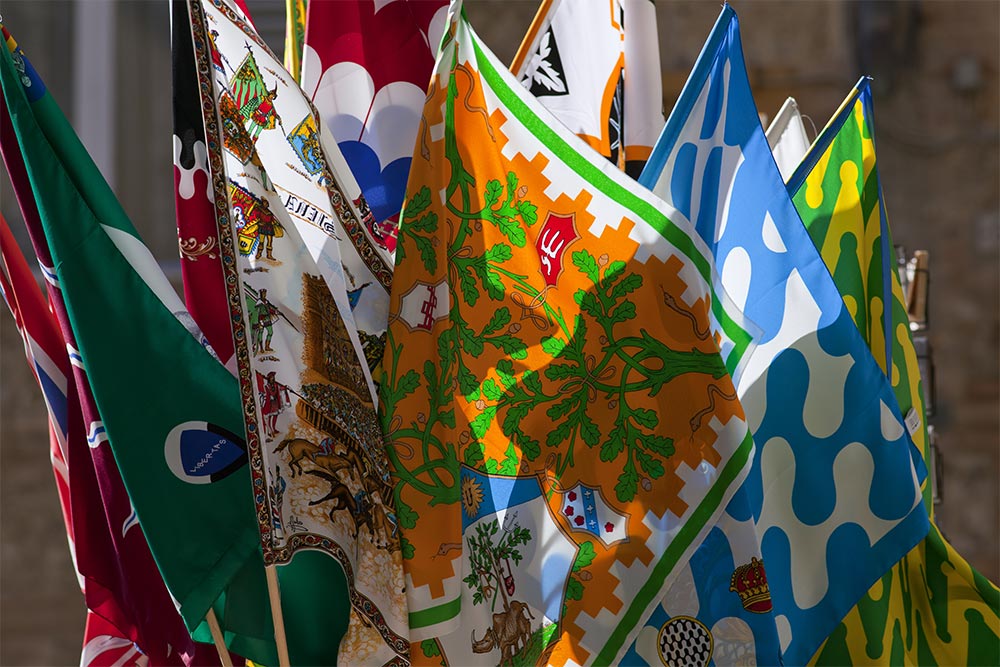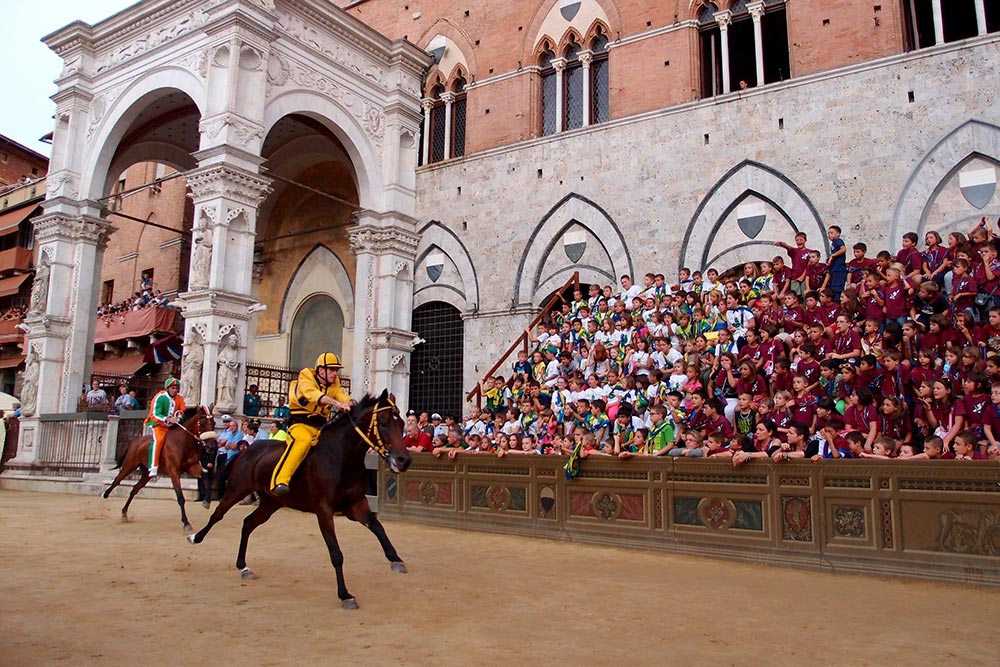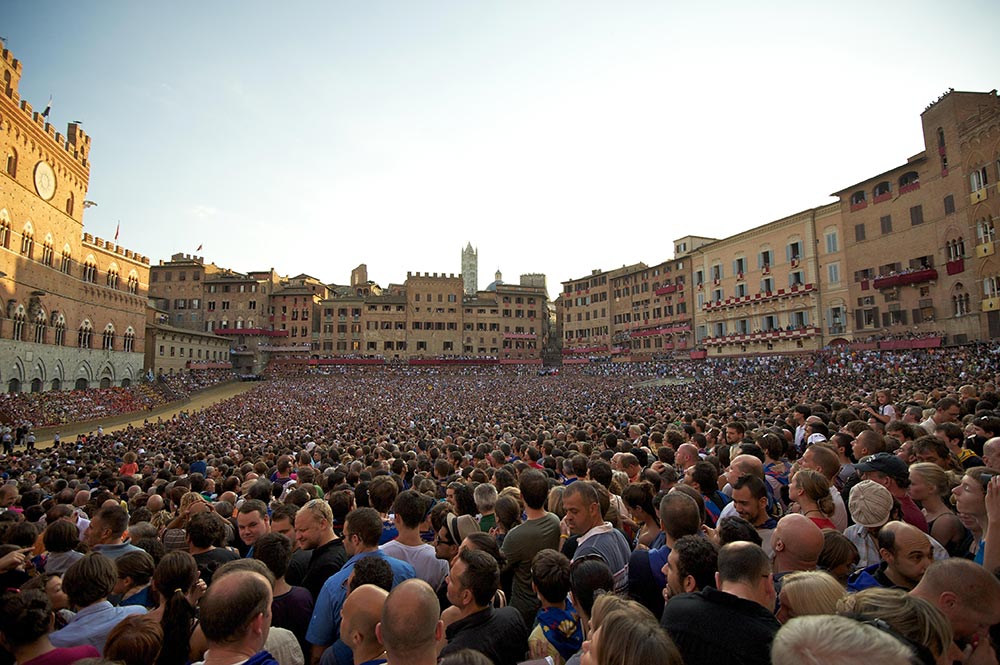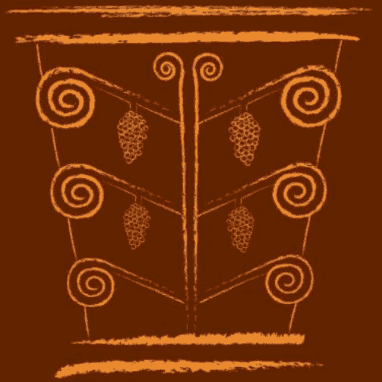Siena means Palio. The very essence of the city, its traditions, its gestures, its soul are in the Palio. A competition with medieval origins, the Palio of Siena is one of the oldest italian traditions.

The race sees as rivals the 17 districts of the city, which correspond to the neighborhoods in which the city has been divided into for centuries with millimeter precision. Each street, lane or alley of the historic center belongs to the contrade according to a well-defined plan. But the districts are more than just neighborhoods, they are small communities, each with its own name, its colors, its small chapel.
Aquila, Bruco, Chiocciola, Civetta, Drago, Giraffa, Istrice, Leocorno, Lupa, Nicchio, Oca, Onda, Pantera, Selva, Tartuca, Torre, Valdimontone; these are the Contrade, each with its own history, each with its own museum and its own headquarters, that parade in traditional clothing twice a year for the Palio. The names of the Contrade originate from real animals or medieval bestiaries; some names instead come from traditional games.
Belonging to a contrada does not mean cheering for a team, but it means being linked to a community. In Siena, in fact, children are baptized in the fountain of the contrada and for the rest of their lives they will be part of it. Over the centuries, alliances but also deep rivalries have often been created between the contrade, which load the moment of the Palio with emotion and pathos that are concentrated in the days of the festival. Because of this, it is not uncommon during the days of the Palio, to see rival contrade come alive and clash.

The contrade have been competing for centuries twice a year on the same dates: July 2nd, with a palio dedicated to the Madonna di Provenzano, in memory of a 16th century miracle, and August 16th, with a palio dedicated to the Madonna Assunta, patron saint of Siena. In the Middle Ages the competition took place along the streets of the city, until the mid 1600s, when it began to take place in Piazza del Campo.
Every gesture, ritual and moment of the Palio has been handed down from immemorial time, only devastating events such as the world wars and the pandemic have prevented this important moment from taking place. The contrade compete to win the “Drappellone” a prestigious painted fabric, by running only 3 laps around the square. There is no prize money, but the prestige of victory is priceless for the contrade.

Each Palio is attended by 10 drawn contrade , the remaining 7 will go by right to participate in the Palio of the following year, along with 3 drawn from the previous Palio. The two Palios are separate races with independent draws. The horses as well, in order to avoid the richest contrada having the best ones every time, are drawn only 3 days before the race. In this way the jockeys and horses have only 3 days to create a bond strong enough to win.
The horse is the real protagonist of the race. It is in fact the horse that wins, even if the jockey falls (this is called a “shaken” horse); it is the horse that receives the blessing in the Contrada chapel, and it is always the horse that occupies the place of honor during the propitiatory dinner, which takes place in the streets of the contrada: the head of the table!
The jockeys, who are not usually from the city, are chosen by the ‘contrade’ and during the race they ride “a pelo”, that is without a saddle and stirrups. They are the protagonists, together with the horse of the race, hailed in case of victory as Saints, ignored in case of defeat.
The most important law of the Palio is not so much to win, but that the rival contrada should NOT win.
This rivalry has incredible historical roots and is reflected in modern Sienese society and makes the Palio much more than a tradition, it makes this city unique in the world.

Letizia Castelli
Tourist Guide and Archaeologist
licensed in Arezzo, Siena and provinces